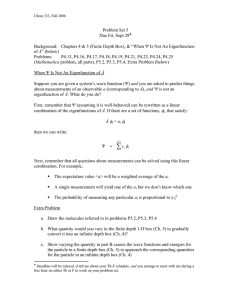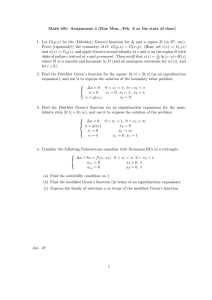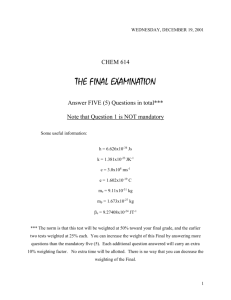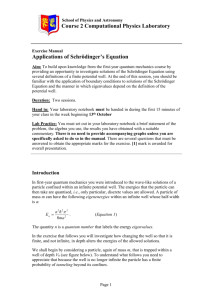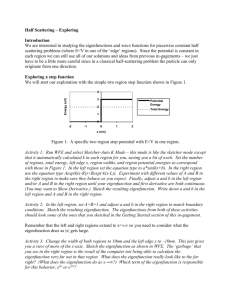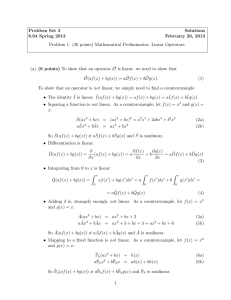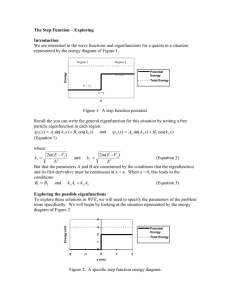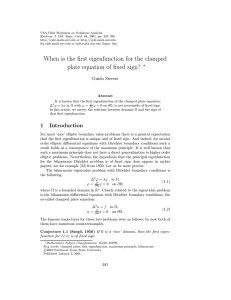Solve Integral Equation by Basis Function Expansions
advertisement
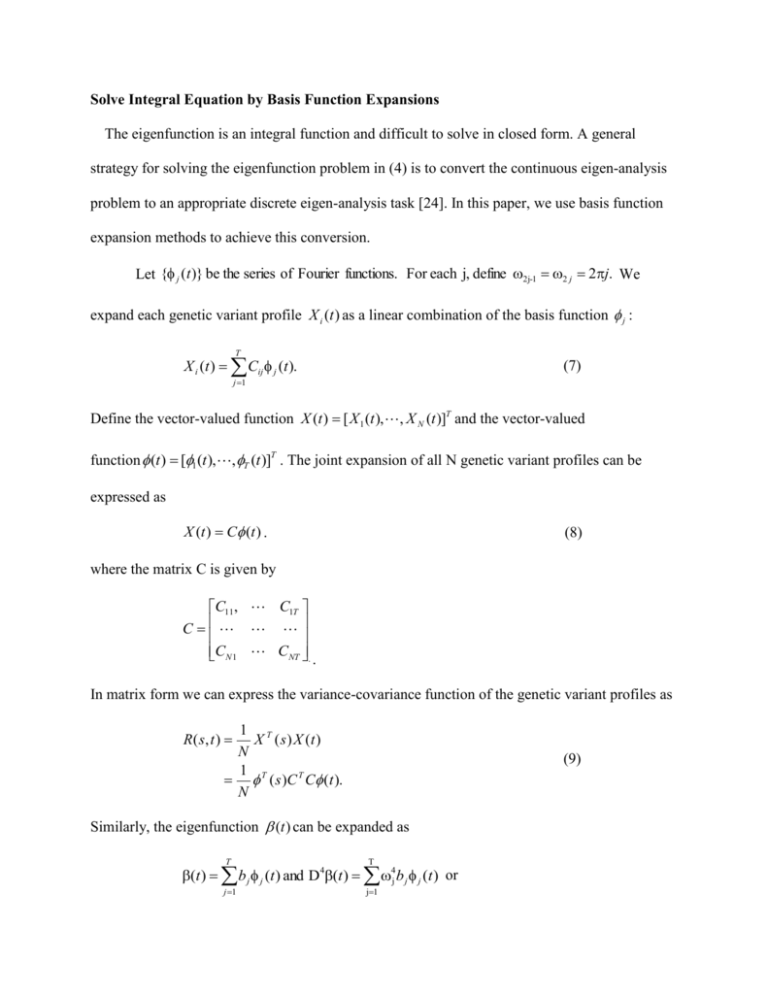
Solve Integral Equation by Basis Function Expansions
The eigenfunction is an integral function and difficult to solve in closed form. A general
strategy for solving the eigenfunction problem in (4) is to convert the continuous eigen-analysis
problem to an appropriate discrete eigen-analysis task [24]. In this paper, we use basis function
expansion methods to achieve this conversion.
Let { j (t )} be the series of Fourier functions. For each j, define 2j-1 2 j 2j. We
expand each genetic variant profile X i (t ) as a linear combination of the basis function j :
T
X i (t ) Cij j (t ).
(7)
j 1
Define the vector-valued function X (t ) [ X 1 (t ), , X N (t )]T and the vector-valued
function (t ) [1 (t ),,T (t )]T . The joint expansion of all N genetic variant profiles can be
expressed as
X (t ) C (t ) .
(8)
where the matrix C is given by
C11, C1T
C
CN 1 CNT .
.
In matrix form we can express the variance-covariance function of the genetic variant profiles as
1 T
X ( s ) X (t )
N
1
T ( s )C T C (t ).
N
R ( s, t )
(9)
Similarly, the eigenfunction (t ) can be expanded as
T
T
j 1
j1
(t ) b j j (t ) and D4(t ) 4j b j j (t ) or
(t ) (t )T b and D 4(t ) (t )T S 0 b
(10)
1
1
where b [b1 ,..., bT ]T and S0 diag ( 14 ,..., T4 ) . Let S diag ((1 14 ) 2 ,..., (1 T4 ) 2 ). Then,
we have
(t ) D 4(t ) (t )T S 2 b.
(11)
Substituting expansions (9) and (11) of variance-covariance R(s,t) and eigenfunction (t ) into
the functional eigenequation (6), we obtain
(t ) T
1 T
C Cb T (t ) S 2 b ,
N
(12)
Since equation (12) must hold for all t, we obtain the following eigenequation:
1 T
C Cb S 2 b ,
N
(13)
which can be rewritten as
[S (
S(
1 T
C C ) S ][ S 1b] [ S 1b] , or
N
1 T
C C ) Su u ,
N
(14)
where u S 1b . Thus, b Su and (t ) (t )T b is a solution to eigenequation (6).
Note that u j , u j 1 and u j , uk 0, for k j. Therefore, we obtain a set of orthonormal
eigenfunctions with an inner product of two functions defined in equation (4), as shown in
equation (15):
|| j ||2 bTj S 2b j uTj SS 2 Su j 1 and j ,k bTj S 2bk uTj uk 0 .
(15)
